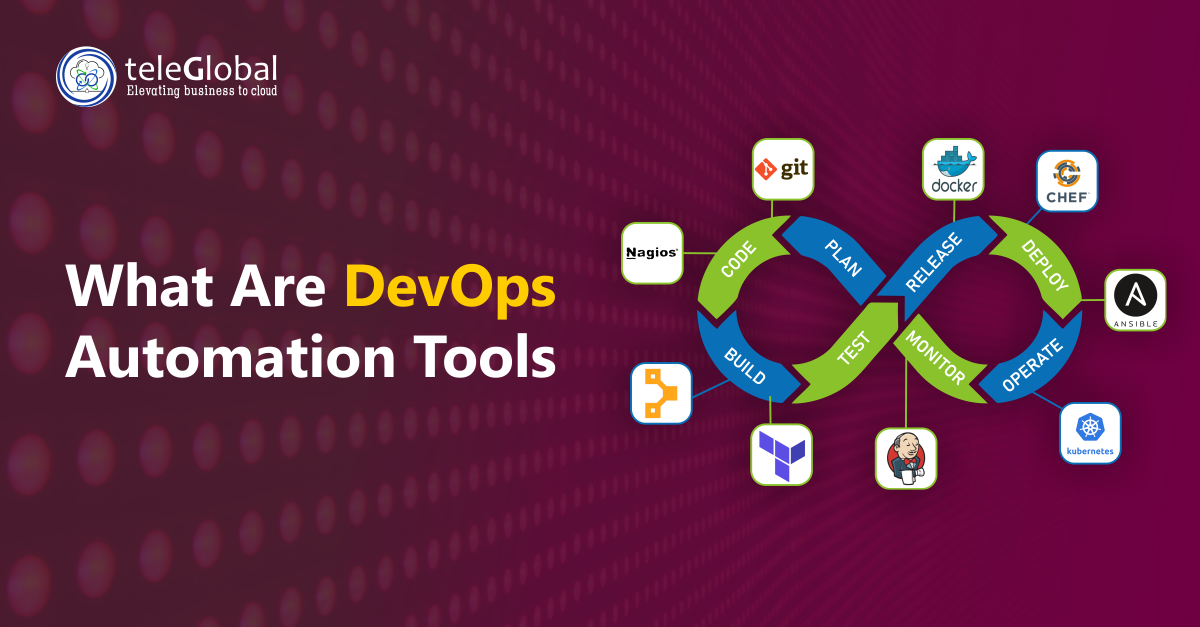
| Author: Kamlesh Kumar | Published: 16-Mar-2023 |
DevOps is a software development approach that emphasizes collaboration and communication between development and operations teams in order to optimize the entire software development life cycle. Automation tools play a key role in the DevOps process, as they help streamline and automate various tasks and processes, including code deployment, testing, and Remote infrastructure management.
Here are some of the most commonly used DevOps automation tools:
1. Git: Git is typically used for source code management and version control. This means that teams can track changes to their code, revert to previous versions if necessary, and collaborate on code development. With Git, multiple developers can work on the same codebase simultaneously, and changes can be easily merged and reconciled.
2. Jenkins: An open-source automation server that can be used to automate various parts of the software development process, including building, testing, and deploying code. Jenkins can automatically build, test, and deploy the code to various environments, such as development, staging, and production.
3. Ansible: Ansible is an open-source IT automation platform that is widely used in the DevOps world. It provides a simple, yet powerful, way to automate the deployment and management of applications, servers, and other IT infrastructure. Ansible uses a declarative language to describe the desired state of infrastructure, making it easy for even non-technical users to automate tasks. Ansible playbooks define the steps needed to configure systems and deploy applications, and these playbooks can be run on multiple systems simultaneously.
4. Docker: Docker is an open-source platform for building, shipping, and running applications in containers. Containers are a lightweight and efficient way to package and deploy applications, making it easier to run them consistently across different environments. In the context of DevOps, Docker is a critical tool for automating the deployment and management of applications. Docker containers provide a portable and isolated environment for applications, making it easier to deploy and test applications in different environments. This can significantly speed up the development and deployment process.
5. Terraform: Terraform is an open-source infrastructure as code (IaC) tool that is widely used in the DevOps world. It provides a way to define and manage infrastructure, such as servers, networks, and databases, as code, making it easier to automate and version infrastructure changes. With Terraform, teams can define the desired state of their infrastructure using a declarative language, and Terraform will take care of provisioning and configuring the infrastructure to match this desired state. Terraform supports multiple cloud platforms, as well as on-premises infrastructure, making it a flexible tool for managing IT infrastructure across multiple environments.
6. Nagios: Nagios is an open-source monitoring tool that is widely used in the DevOps world. It provides a way to monitor servers, networks, and applications, and to alert administrators of any issues that arise. With Nagios, teams can define monitoring rules for various components of their infrastructure, such as disk usage, CPU utilization, and network latency. Nagios will periodically check these components and alert administrators if any thresholds are exceeded. This helps teams proactively identify and address issues before they become critical problems.
7. Chef: Chef is a powerful and flexible open-source configuration management tool that is widely used in the DevOps world. It provides a way to automate the configuration and management of servers, networks, and applications, making it easier to deploy and manage infrastructure at scale. With Chef, teams can define the desired state of their infrastructure using recipes, which are written in a domain-specific language called Chef. Chef will take care of provisioning and configuring the infrastructure to match this desired state. Chef supports multiple operating systems and cloud platforms, making it a flexible tool for managing infrastructure across multiple environments.
8. Puppet: Puppet is a popular open-source configuration management tool that is widely used in the DevOps world. It provides a way to automate the configuration and management of servers, networks, and applications, making it easier to deploy and manage infrastructure at scale. With Puppet, teams can define the desired state of their infrastructure using manifests, which are written in a domain-specific language called Puppet. Puppet will take care of provisioning and configuring the infrastructure to match this desired state. Puppet supports multiple operating systems and cloud platforms, making it a flexible tool for managing infrastructure across multiple environments.
9. Kubernetes: Kubernetes is an open-source platform for automating the deployment, scaling, and management of containerized applications. It is widely used in the DevOps world for managing large-scale, complex applications. Kubernetes provides a way to automate the deployment, scaling, and management of containers, which are lightweight units of software that can be easily moved between environments. With Kubernetes, teams can define the desired state of their application using manifests, which are written in a domain-specific language called YAML. Kubernetes will take care of provisioning and managing the containers to match this desired state.
These tools are not exhaustive, and there are many other tools available to support various aspects of the DevOps process. The choice of tool(s) will depend on the specific needs and requirements of your organization, but by automating various tasks and processes, these tools can help speed up the software development life cycle, improve reliability and stability, and reduce errors and downtime.
 close
close

Hi there! At TeleGlobal, we turn your cloud vision into AI-accelerated reality. What challenge can we help you solve?
Powered by ![]() teleBot
teleBot